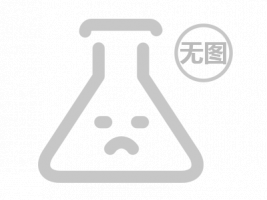稳定碱金属试剂
碱金属(alkali metal)指的是元素周期表ⅠA族中所有金属元素,包含锂(Li)、钠(Na)、钾(K)、铷(Rb)、铯(Cs)、钫(Fr)。碱金属是金属性很强的元素,表现出较强的导电、导热性。碱金属的单质反应活性高,在自然状态下只以盐类存在。
美国STREM开发了稳定碱金属技术,将碱金属封装入纳米结构的硅胶和氧化铝等多孔氧化物中,封装后可降低碱金属处理的危险性,同时保留其还原能力。钠或钠钾合金封装在硅胶中仍可自由流动且不易燃,常温常压下无需液氨即可大量连续使用,副产物及废液均无害。STREM提供的碱金属试剂被广泛用于酯还原、伯奇还原反应;甲苯磺酰胺裂解及脱苄基、脱烷基等脱保护反应。
2008 年百灵威与STREM 正式签署战略合作协议,全权负责STREM 在中国市场的产品销售、技术应用与支持等各项业务。百灵威始终秉承“资源共享,共同发展”之理念,一如既往地为中国化学行业广大科研和生产用户提供品质卓越的有机金属、配体、催化剂等产品及服务!
metals • inorganics • organometallics • catalysts • ligands • customsynthesis • cGMP facilities • nanomaterials
11-1005
HAZ Sodium-silica gel, 35-40% alkali metal in silica gel (Stage I)black pwdr.; 35-60 mesh
moisture sensitive 5g
25g
100g
11-1010
HAZ Sodium potassium (Na2K)-silica gel, 35-40% alkali metal in silica gel (Stage I)black pwdr., 35-60 mesh moisture sensitive 5g
25g
100g
11-1020
HAZ Sodium potassium (K2Na)-silica gel, 35-40% alkali metal in silica gel (Stage I)black pwdr., 35-60 mesh moisture sensitive 5g
25g
100g
■ Example #1: Ester Reduction Using Stabilized Alkali Metals
SiGNa has developed an improved procedure for ester reduction using Na-SG(I) in place of lump sodium or sodium sand (as in the Bouvault-Blanc reaction) to reduce a variety of aliphatic ester substrates (Scheme 1).2,8
Before the advent of widely available hydride reagents, reduction of esters to primary alcohols was generally performed with alkali metals in ethanol -- Bouveault-Blanc reduction. Because of the hazards associated with alkali metal handling and the vigorous reaction conditions, this procedure has become much less useful. Classic procedures for ester reduction using sodium metal involve rapid mixing of the ester, sodium metal, and alcoholic solvent at elevated temperatures, which can cause excessive foaming and even fires.
In a typical procedure, the ester is added to a slurry of Na-SG(I) in THF at 0 °C, followed by the slow addition of methanol. Within minutes after the addition of methanol, the reaction is complete and high yields of primary alcohols are obtained after an aqueous workup (Table 1).
■ #2: Birch Reductions Using Stabilized Alkali Metals
The Birch reduction3 is an alternative to hydrogenation that yields cyclohexadienes. It has the potential for widespread use in the synthesis of drugs and complex natural products.
SiGNa has developed a safer and more convenient modification of the classic Birch reduction that avoids the use of liquid ammonia and cryogenic temperatures. This modification utilizes Stage I sodium in silica gel, Na-SG(I), a safer form of metallic sodium than either lump sodium or sodium sand. SiGNa materials can be weighed out in open air without loss of reactivity and allows for a safer quench and post-reaction work up procedure (Scheme 3).
In a typical procedure, phenanthrene and Na-SG(I) are charged into a reactor and stirred under an inert atmosphere.THF is added,and the slurry is cooled to 0 °C. The proton source,tert-butanol, is added in one portion and the reaction is allowed to warm to room temperature. The desired product is isolated in 60% yield after an aqueous work-up.
This method has been used to produce a variety of structurally diverse Birch products as shown in Table 2.4,5
■ Example #3: Cleavage of Toluenesulfonamides Using Stabilized Alkali Metals
SiGNa also has reported a novel method to cleave toluenesulfonamides to amines using stabilized alkali metals (Scheme 4).7
Treatment with M-SG is a mild and general solution process to desulfonate protected amines. Various sulfonamide substrates were investigated. Detosylation with Na2K-SG(I) tolerates phenyl and ether moieties and is successful for both cyclic and acyclic amines (Table 3).
■ Example #4: Other deprotections such as debenzylations and de-allyations
The removal of residual heavy metals from the product of a chemical process is a major issue, especially in active pharmaceutical ingredients (APIs). Many industry professionals prefer not to use heavy metals at any step of the process to prepare an API. Procedures have been developed to remove benzyl groups, benzhydril groups, sulfonamide groups, allyl groups, trityl groups and other protecting groups from amines and alcohols without the use of heavy metal. A process that uses Na-SG(I) for deprotection, avoids the introduction of palladium and other heavy metals.6
1. Vogt, P.F.;Manufacturing Chemist,2009,80 (3), April, 38-40.
2. Vogt, P.F.; Bodnar, B.;Specialty Chemicals Magazine, 2009, 29(7), Sept. 22-24.
3. Venturello, P.; Barbero, M. in Organometalics Vol. 8b ‘Compounds of Group 1(Li…..Cs), Majewski, M.;Snieckus, V.Eds.,GeorgThieme Verlag, New York, 2006, 881-893.
4. Costanzo, M.J.; Patel, M.N.; Petersen, K.A.; Vogt, P.F.; Bodnar, B.;Tetrahedron Lett.,2009,50, 5463-5466.
5. Nandi, P.; Dye, J.L.; Jackson, J.E.;J. Org. Chem.,2009,74,5790-5792.
6. Nandi, P.; Dye, J.L.; Jackson, J.E.;Tetrahedron Lett.,2009,50,3864-3866.
7. Nandi, P.; Redko, M.Y.; Petersen, K.; Dye,J.L.; Lefenfeld, M.; Vogt, P.F.; Jackson, J.E.Org. Lett.,2008,10, 5441-5444.
8. Bodnar, B.S.; Vogt, P.F.J. Org. Chem.,2009,74, 2598-2600.
